Outcomes outtakes ranging from home sleep testing to QoL effects

There’s no place like home for sleep testing, and Cleveland Clinic’s Sleep Disorders Center has taken this notion to heart by increasing its home sleep studies sixfold since launching an enterprise-wide home sleep testing program in 2013.
Cleveland Clinic is a non-profit academic medical center. Advertising on our site helps support our mission. We do not endorse non-Cleveland Clinic products or services. Policy
That’s one of a number of notable data snapshots reported out of the Sleep Disorders Center in Cleveland Clinic Neurological Institute’s 2015 Outcomes Book. This post shares a few of them, with a focus on obstructive sleep apnea (OSA).
The surge in home sleep testing reflects the convenience that home testing offers to patients relative to overnight testing in a sleep laboratory. It also aligns with a new clinical practice guideline from the American Academy of Sleep Medicine that recommends home sleep apnea testing as an option equivalent to polysomnography for the diagnosis of OSA in uncomplicated adult patients with signs and symptoms suggesting the presence of moderate to severe OSA.
The growth of Cleveland Clinic’s home sleep testing is demonstrated in the below graph illustrating the rise in adult sleep studies conducted by the Sleep Disorders Center from 2011 through 2015. “The increasing number of total studies performed reflects growing recognition of the importance of sleep disorders to health,” says Harneet Walia, MD, a staff physician in the Sleep Disorders Center.

Over the five-year period captured in the graph above, the most dramatic growth was in home sleep testing. That growth resulted in more than 2,000 home sleep studies being conducted by Cleveland Clinic in 2015 (in 2016, which is not reflected in the graph above, home sleep test volume rose to 2,120).
The distribution of 2015 home sleep testing diagnoses is detailed in the graph below, with a full 79 percent resulting in a diagnosis of OSA. In 9 percent of home sleep tests, no diagnosis could be made because of a technically inadequate study, mostly due to inappropriate use of the device. “This represents an opportunity to focus on improving practice,” Dr. Walia observes.
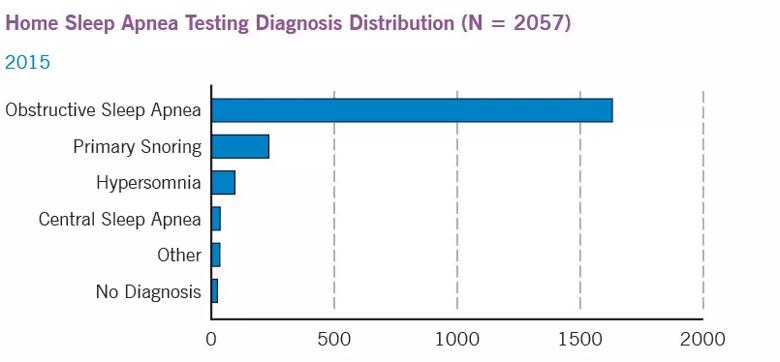
Although the importance of positive airway pressure (PAP) therapy is well recognized for patients with OSA, use rates for the PAP device tend to be low because of difficulties patients often have adjusting to the device.
In 2015, 80 percent of the 1,060 patients with OSA who embarked on PAP therapy at Cleveland Clinic were able to maintain its use for at least four hours per night. This compares favorably to average adherence rates of approximately 50 percent in many published studies, such as those by Kribbs et al. and Reeves-Hoche et al.
Dr. Walia notes that the higher rates at Cleveland Clinic may be attributed to optimally timed follow-up visits with aggressive trouble-shooting strategies for patients who have challenges acclimating to treatment. Moreover, group clinics are also available to OSA patients to provide consultation with sleep experts and medical equipment representatives.
A variety of self-reporting tools are also used to evaluate outcomes in patients with OSA undergoing PAP therapy.
Changes in sleepiness and fatigue symptoms before and after PAP treatment are assessed via two scales:
For Cleveland Clinic patients with OSA assessed in 2015, both measures revealed improvement after a median follow-up of approximately 3.5 months, as detailed in the graphs below.
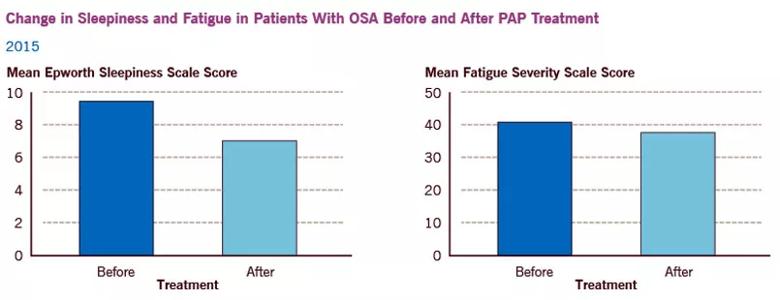
Sample size was 782 for Epworth Sleepiness Scale assessments and 766 for Fatigue Severity Scale assessments.
Quality of life and depressive symptoms before and after PAP treatment are also assessed, using the EuroQol instrument (EQ-5D™), which has patients rank their health status on a single 100-point scale, and the Patient Health Questionnaire (PHQ-9), a nine-item evaluation of depressive symptoms over the previous two weeks. After a median of 3.5 to 4 months of PAP therapy, the vast majority of patients saw their scores either improve or remain stable, as detailed in the graph below.
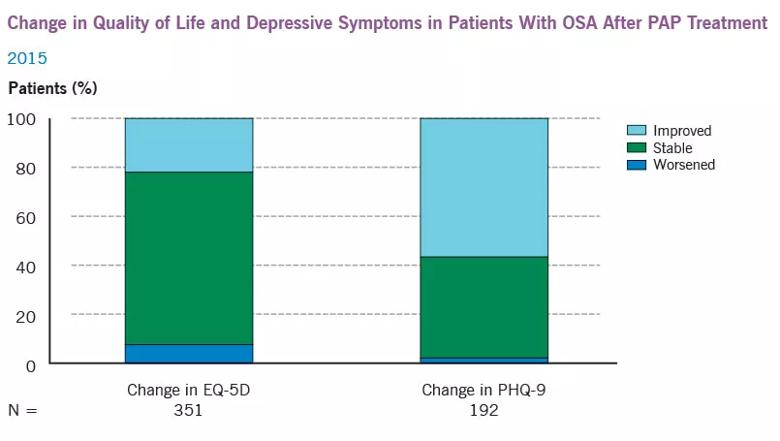
“Patient reporting of outcomes is a vital component of healthcare assessment,” Dr. Walia notes, “and the American Academy of Sleep Medicine recommends collecting such measures on a regular basis. Cleveland Clinic strives to be a model for systematically gathering and analyzing patient data to provide invaluable information on the effectiveness of our programs.”

Favorable rates may stem from focus on outcomes monitoring
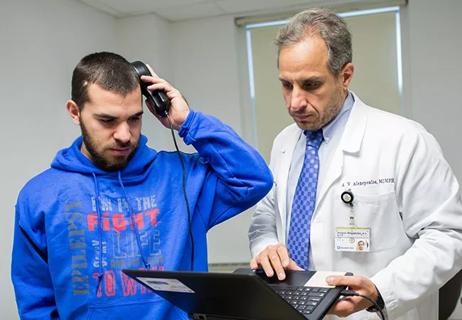
Nearly two-thirds of patients see clinically meaningful gains in large series

Treatment outcomes validate clinic's group-therapy approach

Insights from the first studies of HCAHPS data in this setting

Collaboration, institutionalizing best practices are central
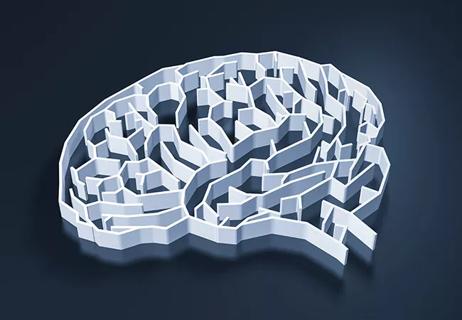
Diversifying the mix with intensive outpatient care, shared appointments

Most patients report relief from intractable spasms
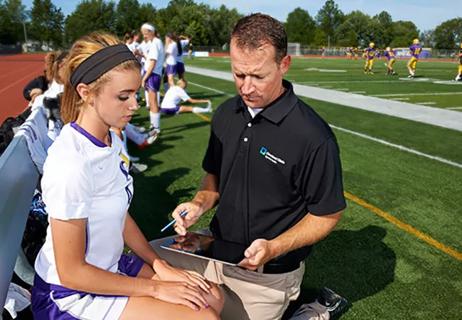
Empowering athletic trainers to better assess, report and monitor head injury